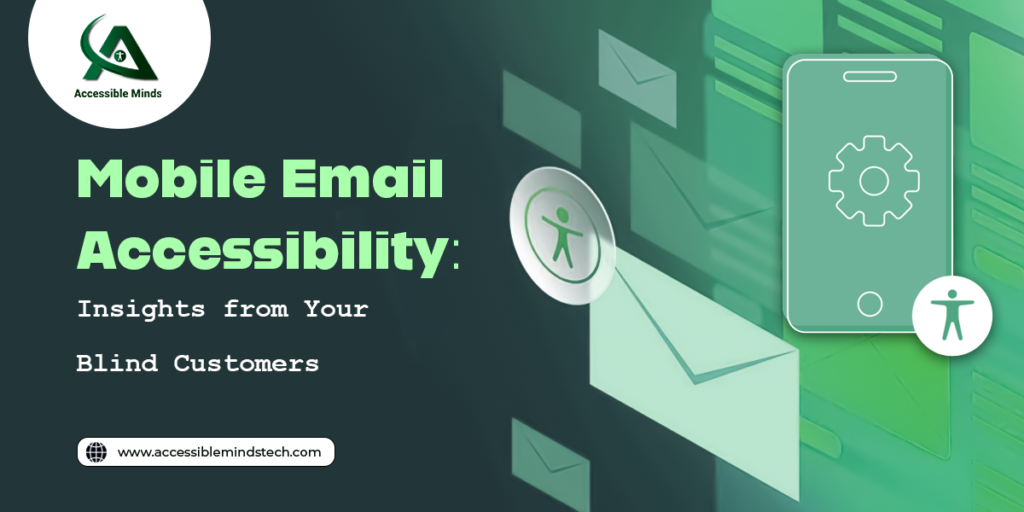As mobile email becomes a dominant form of communication, ensuring accessibility for visually impaired users has become essential for businesses. Without inclusive email design, organizations risk alienating a significant portion of their audience. Improving accessibility, especially for blind and visually impaired users, requires thoughtful design and testing strategies. Here’s a closer look at mobile email accessibility, the challenges blind users often face, and how Digital accessibility remediation services can help bridge the gap.
Understanding Mobile Email Accessibility
Mobile email accessibility refers to the practices that make email content readable and navigable for users with disabilities. While accessible design benefits everyone, it is particularly important for blind or visually impaired users who rely on screen readers and assistive technology to access digital content. Emails that are poorly designed for accessibility can lead to frustration, missed information, and lost engagement from these users. Accessible emails should ensure that all elements, from text to images, are properly tagged, structured, and optimized for readability on mobile devices.
The Challenges Blind Users Face with Mobile Emails
For blind users who rely on screen readers, navigating through emails can pose significant challenges if accessibility standards are not met. Some of the primary obstacles include:
- Lack of Alternative Text for Images
Many emails contain images, but without alternative (alt) text, screen readers cannot interpret these visuals for visually impaired users. Missing or vague alt text leads to a loss of context and disrupts the user experience, especially if crucial information is conveyed through images. - Improperly Structured Content
Emails that lack a logical hierarchy and clear structure can be confusing for screen reader users. Screen readers rely on proper HTML structure, including headings and lists, to interpret content flow. Disorganized content can leave blind users struggling to understand the message’s intent. - Unlabeled or Incorrectly Labeled Buttons and Links
Blind users often face issues with buttons and links that are either unlabeled or improperly labeled. Without accurate labels, screen readers are unable to communicate where links or buttons will take users, leading to frustration and often abandoning the email altogether. - Inaccessible Fonts and Colors
Small font sizes, low contrast, and font choices that are difficult to read pose additional challenges for visually impaired users. Although this issue primarily affects low-vision users, it highlights the importance of considering various visual impairments when designing accessible emails. - Complex Table Layouts
Tables can make emails visually appealing, but complex table layouts can be hard for screen readers to interpret. If tables are used for layout instead of content organization, it can create a confusing experience for users relying on assistive technology.
Best Practices for Creating Accessible Mobile Emails
To provide a more inclusive experience, businesses can incorporate the following best practices into their email design processes:
- Use Clear and Descriptive Alt Text for All Images
Alt text should describe the image’s content and context, allowing screen readers to convey the information accurately. This is especially critical for images that contain key information or call-to-action (CTA) prompts. - Structure Content with HTML Semantics
Proper HTML structure, including headings, paragraphs, and list tags, allows screen readers to interpret content flow. It also helps users with disabilities navigate the email more easily. - Label Buttons and Links Clearly
Ensure that all buttons and links are labeled with descriptive text. Avoid using generic phrases like “click here,” and instead specify the purpose of the link, such as “Learn more about our services.” - Use Accessible Fonts and Sufficient Color Contrast
Opt for simple fonts and ensure the font size is readable on small screens. Additionally, make sure that there is adequate color contrast between the text and background to improve readability for low-vision users. - Simplify Table Layouts
Avoid using tables for email layout. When tables are necessary for presenting data, structure them in a way that is easy for screen readers to interpret, such as keeping tables simple and linear.
The Role of Digital Accessibility Remediation Services
Digital accessibility remediation services play a crucial role in helping businesses achieve compliance with accessibility standards. These services conduct thorough audits to identify accessibility gaps, test content for assistive technology compatibility, and offer recommendations for improvement. By working with experts in digital accessibility, businesses can ensure that their mobile emails are not only inclusive but also in compliance with regulations like the ADA and WCAG.
Insights from Blind Users: What They Value in Accessible Emails
Blind users prioritize emails that are easy to navigate, concise, and visually descriptive through screen reader-friendly elements. Studies have shown that visually impaired users are more likely to engage with brands that demonstrate an understanding of their needs. Listening to feedback from blind users can provide valuable insights for businesses, enabling them to enhance the user experience and foster stronger customer loyalty.
Conclusion
Making mobile emails accessible isn’t just about compliance—it’s about providing an inclusive experience that values all users. Accessibility improvements, like using descriptive alt text, clear structure, and user-friendly fonts, can create a positive experience for blind users. With the support of Digital accessibility remediation services, organizations can identify areas for improvement, implement best practices, and build stronger, more inclusive relationships with their customers. Embracing mobile email accessibility is a step forward in creating a digital environment where everyone, regardless of ability, can fully engage.

